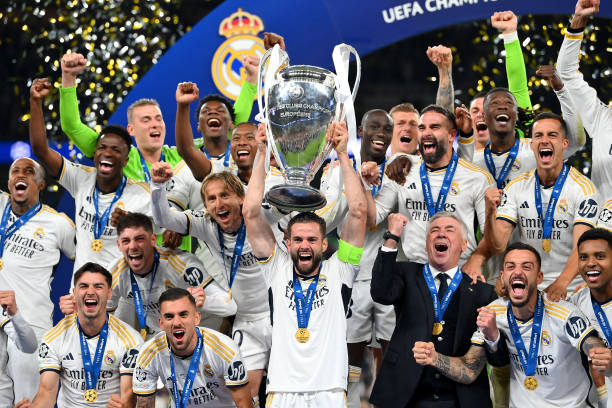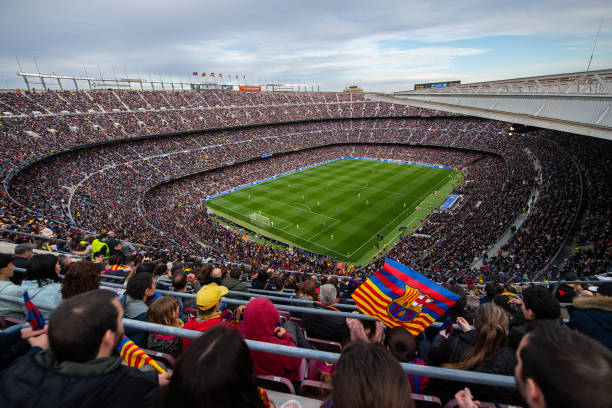
Introduction
Football is more than just a game; it is a multi-billion-dollar industry. The world’s richest football clubs generate enormous revenues through broadcasting deals, sponsorships, merchandise sales, and ticketing. But where does all this money go? This article explores the richest football clubs globally, their revenue sources, and how they strategically spend their wealth.
The Richest Football Clubs in the World
Every year, financial reports from Deloitte Football Money League and Forbes rank football clubs based on their revenues. The following clubs are consistently among the wealthiest in the sport:
1. Real Madrid (Spain)
- Revenue: Over €800 million annually
- Major Income Sources: Sponsorships, broadcasting rights, matchday revenue, and commercial activities.
- Key Sponsors: Emirates, Adidas, and Audi.
- Top Spending Areas:
- High-profile transfers (e.g., Jude Bellingham, Kylian Mbappé rumors)
- Youth academy (La Fábrica)
- Santiago Bernabéu stadium renovations

2. Manchester City (England)
- Revenue: Over €750 million annually
- Major Income Sources: Sheikh Mansour’s investment, sponsorships (Etihad Airways), and TV rights.
- Key Spending Areas:
- Player transfers (e.g., Erling Haaland, Jack Grealish)
- Expanding club infrastructure (Etihad Campus)
- Youth development programs
3. Paris Saint-Germain (PSG) (France)
- Revenue: Over €700 million annually
- Major Income Sources: Qatari ownership investment, sponsorships (Qatar Airways, Nike), and TV rights.
- Key Spending Areas:
- Galáctico-style transfers (e.g., Neymar, Mbappé, Messi)
- Expensive wages and bonuses
- Global brand marketing campaigns
4. Manchester United (England)
- Revenue: Over €680 million annually
- Major Income Sources: Commercial partnerships, TV rights, and matchday earnings.
- Key Spending Areas:
- Transfers (e.g., Jadon Sancho, Casemiro)
- Upgrading Old Trafford stadium
- Sponsorship and brand expansion in Asia & North America
5. Liverpool (England)
- Revenue: Over €650 million annually
- Major Income Sources: Sponsorships, UEFA competitions, merchandise sales.
- Key Spending Areas:
- Player signings (e.g., Darwin Núñez, Cody Gakpo)
- Youth academy (Kirkby Training Centre)
- Expanding Anfield stadium capacity

6. Bayern Munich (Germany)
- Revenue: Over €630 million annually
- Major Income Sources: Club ownership model, corporate partnerships (Adidas, Audi, Allianz).
- Key Spending Areas:
- Smart transfers with controlled spending (e.g., Harry Kane, Leroy Sané)
- Academy development (one of the best in Europe)
- Allianz Arena improvements
7. Chelsea (England)
- Revenue: Over €600 million annually
- Major Income Sources: Todd Boehly’s investment, commercial deals, broadcasting rights.
- Key Spending Areas:
- Record-breaking transfer window (e.g., Enzo Fernández, Moisés Caicedo)
- Revamping Stamford Bridge
- Youth development and scouting
8. Barcelona (Spain)
- Revenue: Over €600 million annually
- Major Income Sources: Sponsorships (Spotify deal), La Liga TV rights, merchandise.
- Key Spending Areas:
- Heavy spending despite financial troubles (e.g., Robert Lewandowski, João Félix)
- La Masia academy
- Camp Nou renovations

SUGGESTED FOR YOU
Essex Cricket’s 2025 Bold Move: How a Women’s Team is Changing the Game
7 Ways English Football Became the Most Thrilling and Watched League in the World
How Football Clubs Spend Their Money
1. Player Transfers & Wages
The bulk of a club’s budget is often spent on acquiring and paying world-class players. Transfer fees have skyrocketed in recent years, with clubs spending record amounts to secure top talent. Examples include:
- Neymar to PSG (€222 million in 2017) – Most expensive transfer in history.
- Mbappé’s reported annual salary of over €70 million at PSG.
- Manchester United spending over €85 million on Jadon Sancho.
2. Stadium Expansion & Renovation
Top clubs invest heavily in improving their stadiums for increased revenue and better fan experience. Notable projects include:
- Real Madrid’s Santiago Bernabéu (€500 million+ renovation).
- Liverpool’s Anfield Road Stand expansion.
- Barcelona’s Camp Nou redevelopment.
3. Youth Academies & Scouting Networks
Investing in youth academies ensures clubs can develop talent rather than solely rely on expensive signings. Examples include:
- Barcelona’s La Masia producing legends like Messi and Xavi.
- Chelsea’s Cobham academy nurturing stars like Mason Mount.
- Manchester City’s extensive global scouting network.
4. Commercial & Marketing Activities
Football clubs are global brands, investing millions in:
- International pre-season tours (e.g., Manchester United’s USA tours).
- Merchandise and kit sales (Real Madrid and PSG sell millions of jerseys annually).
- Social media growth (Cristiano Ronaldo’s transfers increase club followings instantly).
5. Technology & Analytics
Many clubs invest in data analysis to improve player performance and tactics. Innovations include:
- GPS tracking for player movements.
- AI-driven scouting and recruitment.
- Medical and fitness technology to prevent injuries.
Conclusion
The richest football clubs in the world generate immense revenue through sponsorships, TV rights, and commercial deals. However, their expenditures are just as massive, from record-breaking transfers to stadium expansions and cutting-edge technology investments. With financial fair play regulations tightening, clubs must balance spending wisely to maintain success while adhering to sustainability rules.
Stay tuned for more insights into football finance and club investments!









